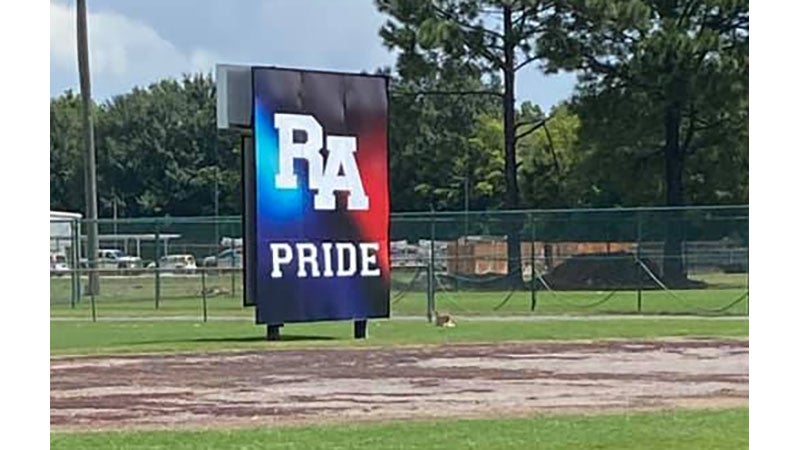Rams capture Railroad Classic trophy, best Wildcats
Published 3:29 am Saturday, September 7, 2013
By RYAN ARENA
L’Observateur
LAPLACE—Not even an hour-long weather delay could derail the West St. John Rams offense in the inaugural Railroad Classic.
After almost four minutes of play between West St. John and St. James, the action was stopped due to lightning and both teams cleared the field for safety. But after the teams retook the field, the Rams scored on their next two plays from scrimmage en route to a 35-7 victory over the rival Wildcats for the fourth consecutive meeting.
Jeremy Jackson rushed for three touchdowns and 205 yards to lead West St. John (1-0), which racked up 432 yards of total offense.
“I just followed my blockers. My lineman, all the glory needs to go to them,” said Jackson. “We like to play up tempo. We’re in better shape than a lot of teams, and our lineman keep it up for four quarters. My coach told me what I needed to look for tonight, what I needed to do. I’m just blessed to have them.”
The victory secured the rights to the Railroad Classic trophy for the Rams, who will keep the newly crafted trophy at their school for the next year. West St. John coach Robert Valdez and St. James coach Dwain Jenkins collaborated on the new name and stakes for the annual clash as a way to add some spice to the local rivalry.
“It’s exciting. This is always a good game to win, because it means so much to so many people in our community,” said Valdez. “It’s exciting. We get to keep the trophy for a full year now, and we feel good about that for sure.”
West St. John marched down to the St. James 4 before the delay, and once play resumed it took just one play for Austin Howard to score on a zone-read run, taking it in to make it 6-0 with 7:52 left in the first quarter.
After the Rams defense forced a Wildcats punt, Jackson stepped to the forefront. He rushed off right tackle and found daylight up the sideline, pulling away from everyone for a 66-yard touchdown run on the Rams’ first play of their second drive. After a Wildcats penalty on the point-after attempt, the Rams went for two and got it on a Jackson plunge.
“Our offense line really came to play tonight,” said Valdez. “The big guys imposed their will tonight. I’m very impressed with their play tonight.”
D’Kwan Sandolph gave SJH solid field position with a strong kickoff return to the Wildcats’ 37, but defensive end Da’Jon Taylor hit Rashaan Dennis for a 7-yard loss and then sacked quarterback Lowell Narcisse to force a third and long and eventually a punt.
The Wildcats (0-1) had an early chance to shift the momentum back in their favor after forcing a Howard fumble and recovering at the Rams’ 36. Narcisse found daylight and ran for an 18-yard gain, then rushed for gains of five and four before the Wildcats faced a fourth and two from the WSJ 8. The Rams’ defense held, ending the SJH threat.
From there, the Rams marched 91 yards in 11 plays, capping things off with a 30-yard Jackson touchdown run with 6:49 remaining in the first half. West St. John converted a big third and nine on the drive when Howard fired a ball outside to Keith Miller for a 15-yard gain. Howard also found Jemoine Green for a 18-yard gain earlier in the drive.
Jackson and Lamore Boudoin each added short touchdown runs in the third to close out the WSJ scoring.
“We wanted to establish our pace,” said Valdez. “I think our kids play better when we’re in attack mode. A lot of people misdiagnose us as a passing team, but we want to run the ball. We want to do both, really, but it starts with the run. And when you can run against a good defense, it makes everything click and it’s a great sign for your club.”
The Rams held St. James to 96 yards of total offense.
For Jenkins, his first official game as a head coach ended with a loss. He said that rebuilding the Wildcats program — one that went 0-19 over the previous two seasons— would be a process.
“In many ways, I was just happy to see us get out on the field tonight,” said Jenkins. “We’re doing a lot of things off the field to try and rebuild this program, but at the end of the day, it’s how it translates on the field. Now, that process can begin.”






